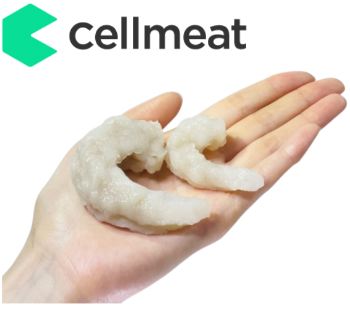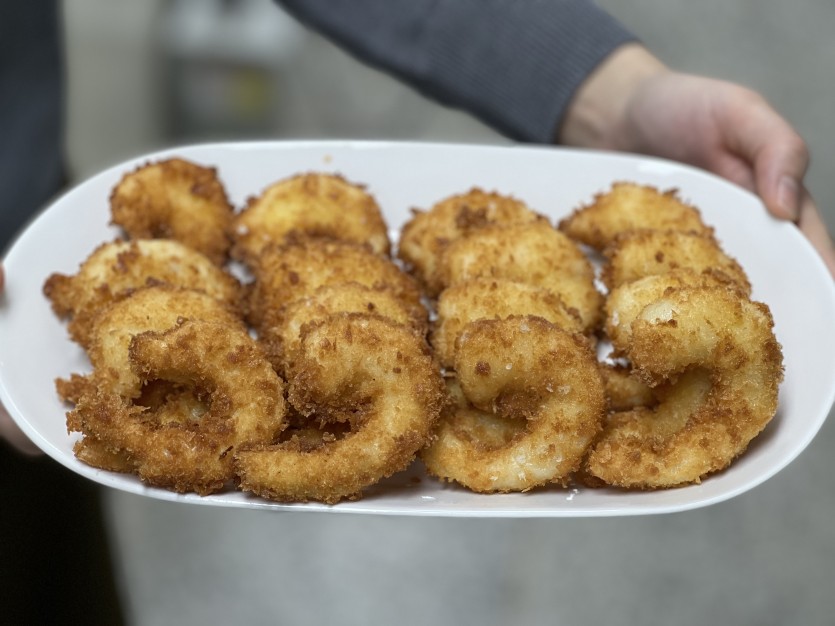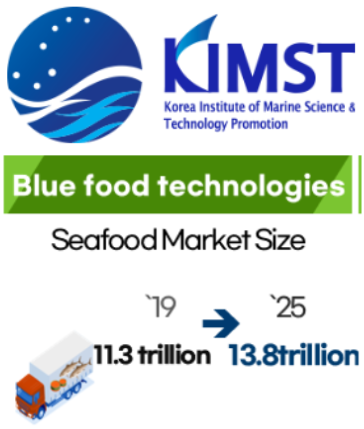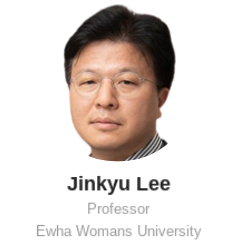|

Photo: CellMEAT/FIS
Lab-grown 'Dokdo Shrimp' tastes just like the real thing
 SOUTH KOREA
SOUTH KOREA
Wednesday, October 16, 2024, 08:30 (GMT + 9)
A Visit to CellMEAT's Urban Facility, Where Premium Dokdo Shrimp Cultured Meat is Grown
Inside a gleaming, silver facility in the heart of Galmae District, Guri-si, Gyeonggi-do, lies CellMEAT’s cutting-edge factory.
 After undergoing double and triple disinfection protocols and donning white sanitary gear, we were introduced to the place where high-end Dokdo shrimp cultured meat is produced. "This facility grows premium seafood, specifically Dokdo shrimp cultured meat," explained Kim Hee-jung, Technical Director at CellMEAT, a startup specializing in fisheries incubation. “With a production capacity of 200 tons annually, it's the largest facility of its kind in the world.” After undergoing double and triple disinfection protocols and donning white sanitary gear, we were introduced to the place where high-end Dokdo shrimp cultured meat is produced. "This facility grows premium seafood, specifically Dokdo shrimp cultured meat," explained Kim Hee-jung, Technical Director at CellMEAT, a startup specializing in fisheries incubation. “With a production capacity of 200 tons annually, it's the largest facility of its kind in the world.”
CellMEAT, which recently opened its doors, focuses on the development of "cultured seafood." In March, the company applied for approval from the Ministry of Food and Drug Safety for its Dokdo shrimp cultured meat. If approved, consumers will soon be able to enjoy lab-grown Dokdo shrimp, potentially marking the first approved case of cultured seafood in Korea.
Seafood cultured meat, as explained by the scientific community, is created by cultivating tissues or cells derived from aquatic animals such as fish, shellfish, and crustaceans. This process uses biotechnology to mass-produce cells from living organisms without genetic modification, creating a product that closely resembles traditional fish meat.

Photo: CellMeat
While research on cultured livestock meat—like beef and pork—has been advancing for some time, studies on seafood have lagged behind. However, with rising global populations and the growing impacts of climate change leading to the depletion of fish stocks, the development of seafood cultured meat is gaining momentum. It also presents a solution to increasing concerns about pollution in marine ecosystems, offering a "blue food" that addresses nutritional, environmental, and food security challenges.
 CellMEAT, founded in 2019 by CEO Park Gil-joon, who has a background in cell biology, is at the forefront of this blue food movement. Since its inception, the company has raised about 23 billion won in investment, which has been used to build state-of-the-art facilities like their 350㎡ cell culture plant, which opened in June. The facility is divided into multiple rooms, each dedicated to a different stage of cell culture. "We collect cells from Dokdo shrimp, cultivate them in a controlled environment, and combine them with elements that replicate the taste, aroma, and texture of real shrimp," said Director Kim. CellMEAT, founded in 2019 by CEO Park Gil-joon, who has a background in cell biology, is at the forefront of this blue food movement. Since its inception, the company has raised about 23 billion won in investment, which has been used to build state-of-the-art facilities like their 350㎡ cell culture plant, which opened in June. The facility is divided into multiple rooms, each dedicated to a different stage of cell culture. "We collect cells from Dokdo shrimp, cultivate them in a controlled environment, and combine them with elements that replicate the taste, aroma, and texture of real shrimp," said Director Kim.
During the visit, we had the opportunity to sample cultured Dokdo shrimp, prepared in a variety of ways. The taste was nearly indistinguishable from traditionally harvested Dokdo shrimp, showcasing the success of this innovative technology.
The Ministry of Food and Drug Safety is expected to make a decision on the approval of Dokdo shrimp cultured meat by April of next year, as the approval process must be completed within 240 days. If approved, this could make Dokdo shrimp—a premium seafood that currently costs over 10,000 won per piece—more accessible to consumers.
 The cultured seafood industry is projected to become a key player in the future food landscape. According to Allied Market Research, the global cultured meat market was valued at $65.2 million in 2023 and is expected to grow exponentially, reaching $6.5 billion by 2033, with an average annual growth rate of 58.5%. The cultured seafood industry is projected to become a key player in the future food landscape. According to Allied Market Research, the global cultured meat market was valued at $65.2 million in 2023 and is expected to grow exponentially, reaching $6.5 billion by 2033, with an average annual growth rate of 58.5%.
In response, Korea has designated the cultured seafood industry as a critical future food sector and is implementing national measures to foster its growth. The Korea Institute of Ocean Science & Technology (KIMST), a government agency supporting research and development in the maritime sector, is investing approximately 9 billion won from 2023 to 2028 to advance cultured seafood technologies and diversify the range of species cultivated.
A project led by Professor Jinkyu Lee from Ewha Womans University aims to expand the scope of cultured marine species to include fish like Neungseong, pen shells, oysters, and pollock. Research teams from Kyung Hee University, Korea University, Pukyong National University, and Yonsei University, along with companies such as CellMEAT and Daesang, are collaborating on this initiative.
 “Our goal is to develop a wide variety of cultured seafood products to ensure a stable supply of safe food," Professor Lee explained. "We are also working to reduce production costs, which currently stand at around $2000 per kilogram, with a target of bringing this down to $30 per kilogram. This will be a foundational step toward establishing Korea’s presence in the global cultured seafood market." “Our goal is to develop a wide variety of cultured seafood products to ensure a stable supply of safe food," Professor Lee explained. "We are also working to reduce production costs, which currently stand at around $2000 per kilogram, with a target of bringing this down to $30 per kilogram. This will be a foundational step toward establishing Korea’s presence in the global cultured seafood market."
KIMST’s head, Oh Un-yeol, emphasized the potential impact of cultured seafood: "Fisheries cultured meat represents a breakthrough solution to the future challenges of food security. We will continue to support research in the blue food sector to secure sustainable food and marine resources."
This initiative, co-planned by Maeil Economic and KIMST, marks a significant step toward shaping the future of food in Korea.
[email protected]
www.seafood.media
|



